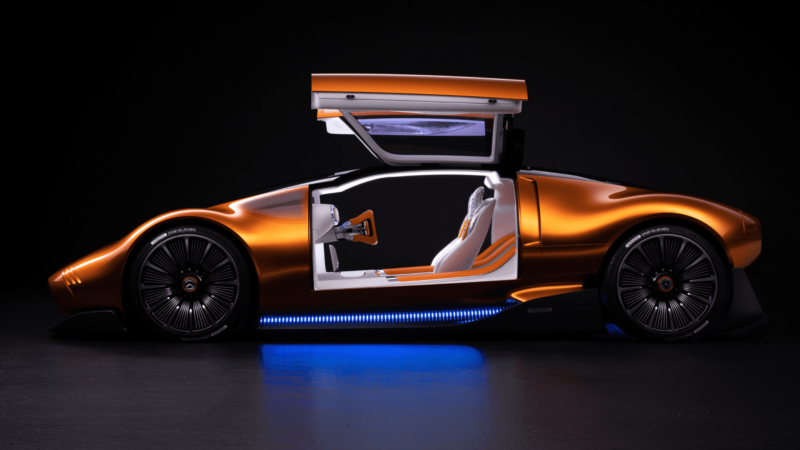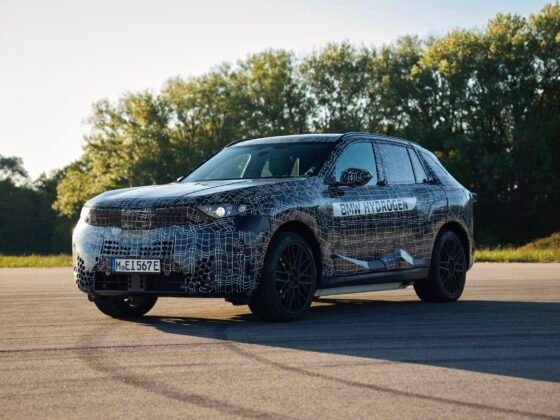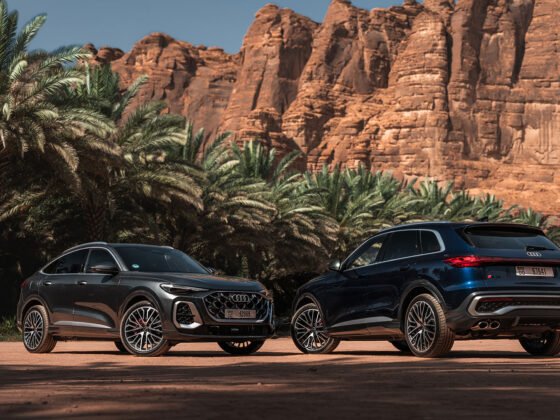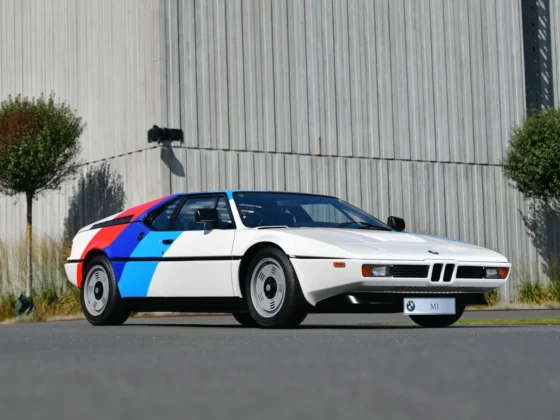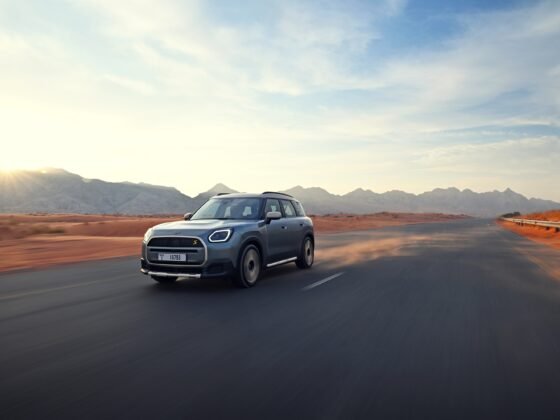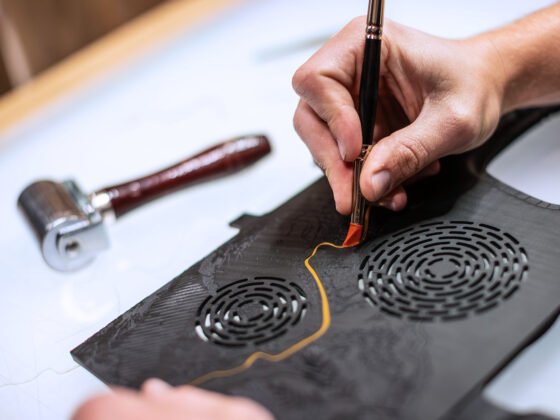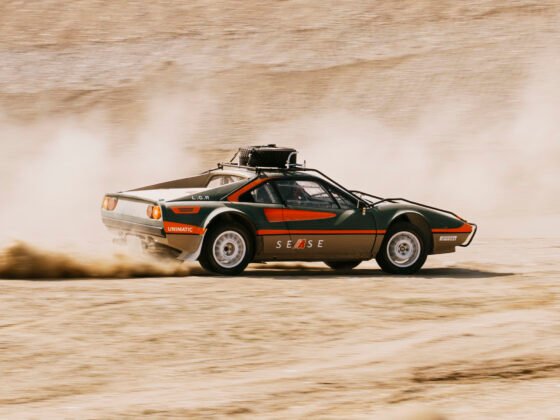C 111 were Mercedes-Benz’s experimental vehicles from the 1960s and 70s, used to test revolutionary Wankel and turbodiesel engines, as well as other design and technological innovations. The Vision One-Eleven prototype will likewise bring to light the marque’s innovations for the coming decades. The most significant ones being the revolutionary YASA axial-flux motor and the high-performance liquid-cooled battery.
The extremely powerful and highly efficient new axial-flux motor was developed by electric motor specialist YASA. The Oxford-based British company has been a 100-percent subsidiary of Mercedes-Benz AG since July 2021. Tim Woolmer, Founder and Chief Technology Officer of YASA, outlining the benefits of the new motor said:

Tim Woolmer, Founder and Chief Technology Officer of YASA
“Axial-flux motors are significantly lighter and more compact, yet more powerful than comparable radial-flux motors currently used in 99 percent of all electric cars. In an axial-flux motor, the electromagnetic flow runs parallel to the motor’s rotational axis, which is highly efficient. In a radial-flux motor, the flow runs perpendicular to the rotational axis. Compared to radial-flux motors, they have considerably higher and more enduring power reserves, which delivers a whole new level of performance.”
The Axial-flux motor’s narrow package means reduced weight and dimensions. The weight of an axial-flux motor is just one-third of that of current electric motors with the same power output. At the same time, it requires just one-third of the space occupied by a radial-flux motor.

YASA axial-flux motor
By acquiring YASA, Mercedes-Benz has secured access to an innovative future technology that has the potential to take electric mobility to a new level of performance. It has been working together with YASA to prepare the motor for large-scale production at the Mercedes-Benz Berlin-Marienfelde plant. The motors manufactured there will be at the heart of the forthcoming powertrain for the marque’s performance segment.
The new battery, a promising prototype for future performance-oriented batteries, features high-performance liquid-cooled cylindrical cells with novel cell chemistry. It was developed largely thanks to the extensive know-how of the motorsport experts at Mercedes-AMG High-Performance Powertrain in Brixworth.
Markus Schäfer, Mercedes-Benz Group’s Chief Technology Officer, comments: “The innovative YASA axial-flux high-tech electric motor… offers a motorsport-like power output from a considerably smaller package. This makes the YASA axial-flux motor ideal for electric high-performance vehicles.
“Combined with the liquid-cooled cylindrical-cell battery with Formula-1 inspired cell chemistry, the Mercedes-Benz Vision One-Eleven is yet another proof point for the broad performance spectrum encompassed by our four-pronged development strategy for electric drive.”

The new compact motor and battery combination offers designers and engineers more apace when designing an electric vehicle, as demonstrated by Vision One-Eleven. “Our all-electric vision show car is the modern-day interpretation of the C 111, which was avant-garde at the time. The element of surprise comes from its exceptionally clean, purist and, at the same time, extremely muscular proportions. This iconic clarity is also reflected in the interior,” says Gorden Wagener, Chief Design Officer at Mercedes-Benz Group.
The exterior reinterprets the One-Bow design into a modern aesthetic. From the low-slung front end to the muscular hind quarters, it runs in a smooth bow that is just 1,170 mm high. The sculptural feel of the car harmonises with the copper-orange alubeam paintwork, an unmistakable reference to the distinctive colour of the C 111. However, Vision One-Eleven changes with the light, conveying a sense of extravagance.
The car’s Flush-fit gullwing doors have windows that are opaque from the outside and camouflaged by a pixelated pattern. The large-diameter wheel design, set beneath voluminous flared wings, incorporate structured elements evocative of electric motor windings. They stand in contrast to the vehicle’s minimalist and smooth surface design.

The very low-slung front and rear skirts are finished in matte black. The two deeply scooped aerodynamic elements are visually connected by two blade profiles in the same colour running along the flanks beneath the sills. These profiles feature piercings that are backlit in blue. The dark “keel line” of Vision One-Eleven generates an impression of a seamless transition between the vehicle and the ground beneath.
At the front is a 3D display panel in the guise of C 111’s characteristic round lights. It can convey messages to other road users. The most prominent feature at the front, however, is the black air intake on the bonnet. The rear end is likewise dominated by the powerfully profiled diffuser. Spanning the breadth above it is a display that echoes the shape of its counterpart at the front, but in red. Blue lighting effects are also visible at the rear and sides. The inner face of the wheels is fitted with circular lighting elements.
Inside, Vision One-Eleven presents Mercedes-Benz’s new interior lounge concept, in which the interior space changes when the driving mode changes. In race mode, the backrest is upright and the interior morphs into a minimalist driving machine. In lounge mode, the seats are more integrated into the interior sculpture, which merges sills, centre tunnel and luggage compartment into a single unit. The compact proportions of the electric motors result in an exceptionally specious interior.

Vision One-Eleven’s minimalist interior features a progressive colour concept and extraordinary material combinations. Large surfaces such as the dashboard are upholstered in white fabric displaying a tech-look honeycomb structure. The material is made from 100 per cent recycled polyester. Other elements such as the armrests on the sills, centre console and the rear parcel shelf beneath the rear windscreen are clad in bright orange leather, tanned using coffee bean husks.
The seat cushions are integrated flush-fit into the floor, similar to those in Formula 1 cars. However, the angle of the backrest can be adjusted and has diamond-quilted upholstery with a silver shimmer. Between the seats is a compact centre console that appears to be freestanding in space.
Polished aluminium in the steering-wheel spokes and inlaid as straps across the armrests underscore the tech look and feel. The same applies to the brake and accelerator pedals, both of which are made from polished aluminium and floor mounted. The leather-clad steering wheel is fitted with various functional controls and state-of-the-art touch elements. This is complemented by a compact touchscreen with a high-resolution display mounted to the side of the steering wheel and angled towards the driver.

The slender pixel display spanning the entire breadth of the dashboard reflects the form of the front and rear light bands. Here too, the pixel structure is intentionally coarse, displaying information in the style of “early digital” news tickers. This is done with the help of glass pixels that show a changing colour gradient depending on the viewing angle. The corresponding information also appears in HD on the high-resolution screen next to the steering wheel.
Mercedes-Benz also premiered its Magic Leap 2 augmented reality (AR) headset along with the Vision One-Eleven. This next-gen user experience takes the wearer inside a virtual prototype of Vision One Eleven using high-definition digital content. It creates a seamless spatial blend of the physical interior and digital user interface. In effect, the entire car becomes the user interface.
“Our goal at Mercedes-Benz is not to do styling – our goal is to create icons,” said Gorden Wagener. “To me, that makes the difference between mainstream design and luxury. Design icons like the Type 300 SL and C 111 – both with gullwing doors – are part of our DNA. These legendary vehicles were major inspirations for the iconic design of the Mercedes-Benz Vision One-Eleven. This is beauty and the extraordinary united in one vision of the future.”

